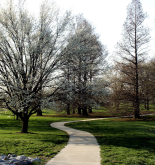Did you know this is a genuine town in Mali, Africa? It was the intellectual heart, cultural and commercial capital of Africa 500 years ago, located in front of the enormous Sahara desert and synonymous with remoteness, exoticism, and mystery.
Something about Timbuktu
Timbuktu is a Mali city located 20 kilometers (12 miles) north of the Niger River. The town serves as the administrative center of the Tombouctou Region, one of Mali’s eight administrative regions. It had a population of 54,453 residents at the time of the 2009 census.
Timbuktu began as a seasonal colony before becoming a permanent one in the early 12th century. Timbuktu developed as a result of a shift in trading routes, most notably during Mansa Musa’s arrival in 1325. It was annexed by the Mali Empire in the early 14th century. In the first part of the 15th century, Tuareg tribes briefly controlled the city until being conquered by the growing Songhai Empire in 1468. In 1591, a Moroccan force overcame the Songhai and established Timbuktu as their capital, rather than Gao. The conquerors formed a new ruling class, the Arma, which remained virtually self-sufficient in Morocco following 1612. However, the city’s golden age, during which it was a significant center of scholarship and culture for the Mali Empire, had come to an end, and it entered a lengthy period of decline. Various tribes ruled until 1893, when the French took it, a status that lasted until 1960, when it became a part of the current Republic of Mali. Timbuktu is currently destitute and suffering from desertification.
During Timbuktu’s Golden Age, the town’s numerous Islamic academics and wide commerce network supported an important book trade, which, along with the campuses of the Sankore Madrasah, an Islamic university, established Timbuktu as an African scholarly center. Numerous historical writers, including Shabeni and Leo Africanus, have written about the city. These tales fueled curiosity throughout Europe, where the city’s reputation transformed from immensely wealthy to mysterious.
Timbuktu: The Fabled Center of Learning’s History
Timbuktu is a 1,800-year-old city in Mali, West Africa. It was home to a thriving writing tradition during Europe’s Middle Ages, which resulted in the creation of millions of manuscripts, hundreds of thousands of which have survived to the present day.
The city has become linked with mysterious solitude in the West, the furthest point one may traverse. However, for ages, this was a significant commerce city and center of study. The city reached its zenith during the Songhay Empire’s reign in the 16th century. “It has been estimated that Timbuktu had up to 25,000 pupils, accounting for roughly a quarter of the city’s population,” John Hunwick and Alida Jay Boye wrote in their book “The Hidden Treasures of Timbuktu” (Thames and Hudson, 2008).
An Islamic city with three big mosques, the Koran study formed the core of this learning tradition, with its experts producing, copying, and importing works on a variety of subjects, including astronomy, mathematics, law, geography, and what we would consider history. Researchers remark the persistence of a 500-year-old toothpaste recipe in a BBC documentary.
Timbuktu came under attack in late 2012 by Islamist groups that had seized authority in northern Mali.
“Radical Islamist militants in northern Mali have regularly destroyed the renowned city’s legacy, tearing open the tombs of local saints and destroying a door in a 15th-century mosque,” Geoffrey York, a Globe and Mail correspondent reporting from Mali, writes in a recent article.
In addition to the architectural devastation, he warns that the city’s libraries, which are brimming with manuscripts, are threatened. “Some academics believe they are as significant as the Dead Sea Scrolls — and an implicit rebuttal to the Islamist militants’ harsh, restricted worldview.”
Where is Timbuktu?
Timbuktu is located in Mali, a West African country on the southwestern tip of the Sahara Desert. 12 miles (20 kilometers) north of the Niger River, the city is located. It had a population of approximately 54,000 in 2009.
According to historical records, the city was founded at least as early as A.D. 1100, and archaeological study conducted before to the rise of radicals indicates that Timbuktu may have even earlier beginnings.
“Evidence from the excavations suggests that permanent large-scale urban communities arose in Timbuktu as early as A.D. 200, with initial colonization extending all the way back to the Late Stone Age,” writes Douglas Park, an archaeologist at Yale University who worked in Timbuktu in 2008.
He notes that this early metropolis had significant relations to eastern Sahara’s “proto-Berber tribes.” “There is also evidence that Timbuktu became involved in the trans-Saharan trade by A.D. 600, as demonstrated by the discovery of North African-style glass beads and copper in Timbuktu tombs.”
As Timbuktu reached the historic period, this trade expanded with gold arriving from the south and traveling through the city on route to North Africa via the Sahara.
“The most valuable item exchanged for the gold was rock salt,” Hunwick and Boye write, noting that al-Umari, a 14th-century Arabic historian, claimed that people in West Africa “will exchange a cup of salt for a cup of gold dust,” an exaggeration, perhaps, but the type of story that enticed later European explorers.
Timbuktu’s Djingueré Ber (Great Mosque) was built in the 1300s and restored in the 1500s.
Timbuktu – Magnificent mosques
Three huge mosques were built in Timbuktu and have become some of the city’s most recognizable landmarks. The sticks visible on the sides of the buildings serve a dual purpose: they act as scaffolding for replastering the monuments’ surfaces.
According to researchers Jonathan Bloom and Sheila Blair in the “Grove Encyclopedia of Islamic Art and Architecture” (Oxford University Press, 2009), construction of the Djingueré Ber (also known as the “Great Mosque”) in the southwestern part of the city began around A.D. 1325, following the ruler of the Malian Empire’s (which at the time controlled Timbuktu) return from a gold-laden pilgrimage to Mecca. The poet and architect Abu Ishaq al-Saheli spearheaded the initiative. It was then rebuilt in the sixteenth century and remodeled again in the nineteenth.
“Constructed of mud-brick and stone rubble, with the ends of beams protruding from the fabric of the building,” Bloom and Blair write. “The mosque features squat, conical corner towers, a minaret approximately 16 meters [50 feet] high, a flat roof supported by mud pier arcades, and several vaulted limestone arches.”
Another mosque, Sankoré, was constructed in the city’s northern section and became a center for learning. “[T]he internal walls of which conform to the outer dimensions of Mecca’s Ka’ba,” Bloom and Blair wrote, referring to the Ka’ba as a cube-shaped shrine that Muslims regard as the holiest location on Earth.
The Sankoré neighborhood, in which the Sankoré mosque is located, became connected with learning. “The Sankoré quarter drew a large number of intellectuals to reside, study, and teach, earning it a reputation as a center of higher learning,” Hunwick and Boye wrote.
Another mosque, Sidi Yahyia, was constructed in the city’s center in the 15th century, according to Bloom and Blair. It, too, was eventually restored and “reconstructed in stone in the twentieth century by the French.”
Timbuktu – Center for education
While gold was Timbuktu’s primary export, books were supposed to be one of its primary imports.
“There are numerous judges, professors, and priests in Timbuktu, all of whom are highly compensated by the king, who places a high premium on learned persons. Numerous manuscripts from Barbary are auctioned. Such sales are more profitable than those of any other item,” Leo Africanus wrote in the sixteenth century. (John Hunwick’s translation)
Although mosques such as Sankoré were centers of study, Hunwick and Boye note that much of the day-to-day teaching activity took place more informally in the houses of academics. “At the heart of the Islamic teaching tradition is the reception of a text, which is transmitted from the instructor to the pupil via a chain of transmitters or silsila, preferably through the shortest and most prestigious set of intermediaries,” they write. The student would either listen to the teacher dictate, copy it and read it back, or listen to another student read it. “Once he had a correct copy, he could study the text’s meaning and technical complexities through lectures presented by his teacher and, at a higher level, through question and answer.” To assist them in teaching, the scholars maintained their own private libraries.
According to researcher Abdel Kader Haidara, the surviving manuscripts are in terrible condition due to termites, moisture, and other issues linked with the passage of time. While hundreds of thousands survive today, there would have been many more originally. “Had it not been for these [damages], the estimated number of manuscripts in Timbuktu and its environs would have been in the millions,” he says in a chapter of his book “The Meanings of Timbuktu” (HRSC Press, 2008).
Exploration in Europe
Timbuktu’s demise as a center for intellectuals began in 1591, when the site was taken seized by musket-wielding Moroccan warriors. Although other outstanding works were produced, notably two monumental chronicles of Timbuktu’s history completed in the seventeenth century, the city failed to reclaim its previous luster.
European explorers were enticed by legends of wealth and made enormous efforts to reach the city, but it wasn’t until 1828 that French adventurer René Caillié visited and returned alive from Timbuktu. Later in the nineteenth century, the French established a colonial empire over a large portion of West Africa. They controlled Timbuktu until Mali won independence in 1960.
Prior to the extremist groups’ recent takeover, local conservators, librarians, and researchers were making strides in protecting and digitizing the city’s manuscripts.
These accomplishments, as well as the texts themselves, are now jeopardized. “I’m always asking myself thousands of questions regarding the manuscripts,” local scholar Mohamed Diagayete told the Globe and Mail. “If we lose them, we have no backup. It is eternal.”



